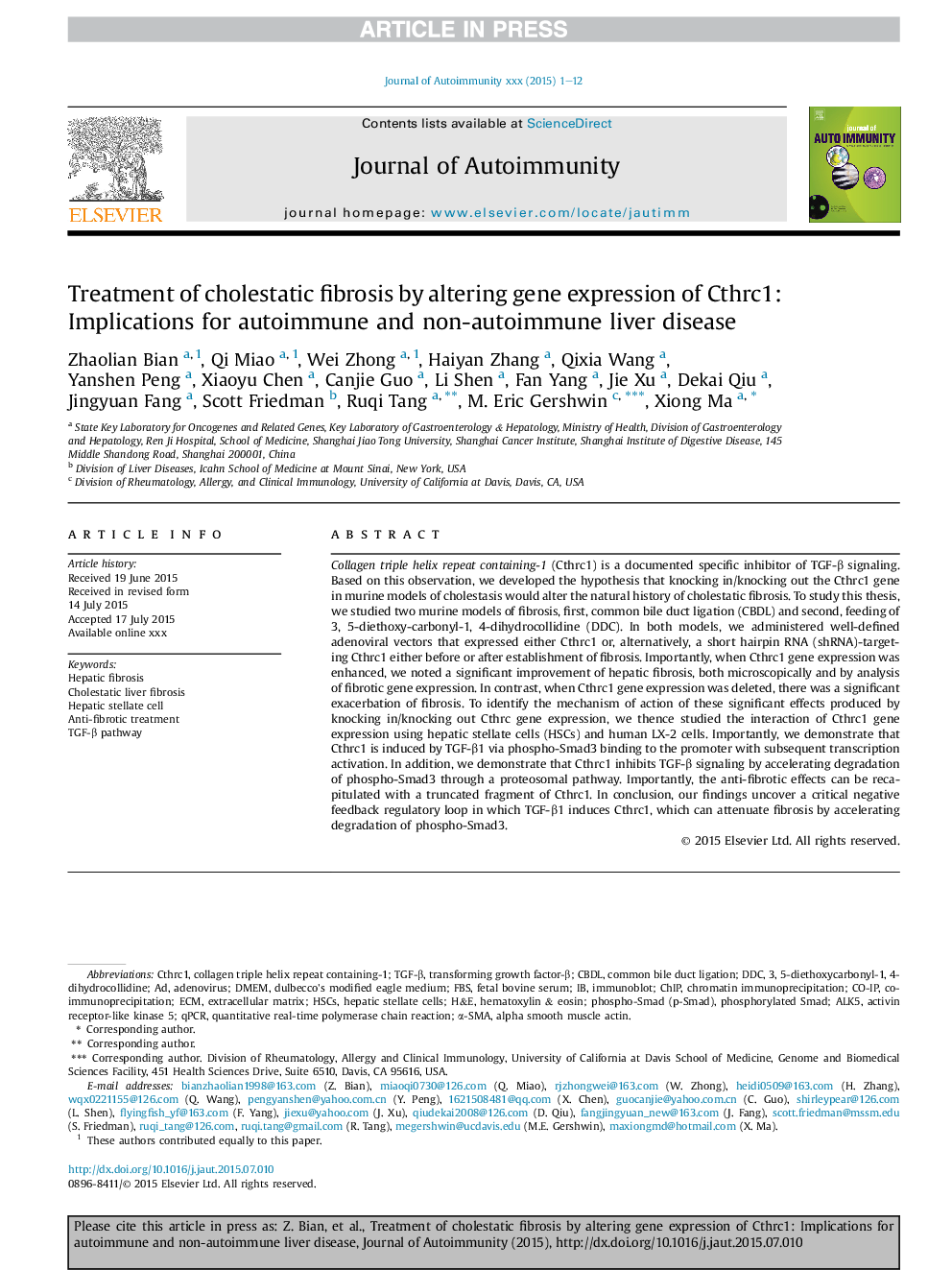| Article ID | Journal | Published Year | Pages | File Type |
|---|---|---|---|---|
| 6119207 | Journal of Autoimmunity | 2015 | 12 Pages |
Abstract
Collagen triple helix repeat containing-1 (Cthrc1) is a documented specific inhibitor of TGF-β signaling. Based on this observation, we developed the hypothesis that knocking in/knocking out the Cthrc1 gene in murine models of cholestasis would alter the natural history of cholestatic fibrosis. To study this thesis, we studied two murine models of fibrosis, first, common bile duct ligation (CBDL) and second, feeding of 3, 5-diethoxy-carbonyl-1, 4-dihydrocollidine (DDC). In both models, we administered well-defined adenoviral vectors that expressed either Cthrc1 or, alternatively, a short hairpin RNA (shRNA)-targeting Cthrc1 either before or after establishment of fibrosis. Importantly, when Cthrc1 gene expression was enhanced, we noted a significant improvement of hepatic fibrosis, both microscopically and by analysis of fibrotic gene expression. In contrast, when Cthrc1 gene expression was deleted, there was a significant exacerbation of fibrosis. To identify the mechanism of action of these significant effects produced by knocking in/knocking out Cthrc gene expression, we thence studied the interaction of Cthrc1 gene expression using hepatic stellate cells (HSCs) and human LX-2 cells. Importantly, we demonstrate that Cthrc1 is induced by TGF-β1 via phospho-Smad3 binding to the promoter with subsequent transcription activation. In addition, we demonstrate that Cthrc1 inhibits TGF-β signaling by accelerating degradation of phospho-Smad3 through a proteosomal pathway. Importantly, the anti-fibrotic effects can be recapitulated with a truncated fragment of Cthrc1. In conclusion, our findings uncover a critical negative feedback regulatory loop in which TGF-β1 induces Cthrc1, which can attenuate fibrosis by accelerating degradation of phospho-Smad3.
Keywords
TGF-β pathwayHSCsECMCBDLALK5qPCRCTHRC1FBSDMEMTGF-βphosphorylated Smadα-SMAactivin receptor-like kinase 5ddCDulbecco's modified Eagle MediumH&EAdenovirusalpha smooth muscle actinchromatin immunoprecipitationImmunoblottransforming growth factor-βfetal bovine serumHepatic stellate cellHepatic stellate cellsCo-IPHepatic fibrosisExtracellular matrixCo-ImmunoprecipitationHematoxylin & Eosinquantitative real-time polymerase chain reactioncommon bile duct ligationCHiP
Related Topics
Life Sciences
Immunology and Microbiology
Immunology
Authors
Zhaolian Bian, Qi Miao, Wei Zhong, Haiyan Zhang, Qixia Wang, Yanshen Peng, Xiaoyu Chen, Canjie Guo, Li Shen, Fan Yang, Jie Xu, Dekai Qiu, Jingyuan Fang, Scott Friedman, Ruqi Tang, M. Eric Gershwin, Xiong Ma,
